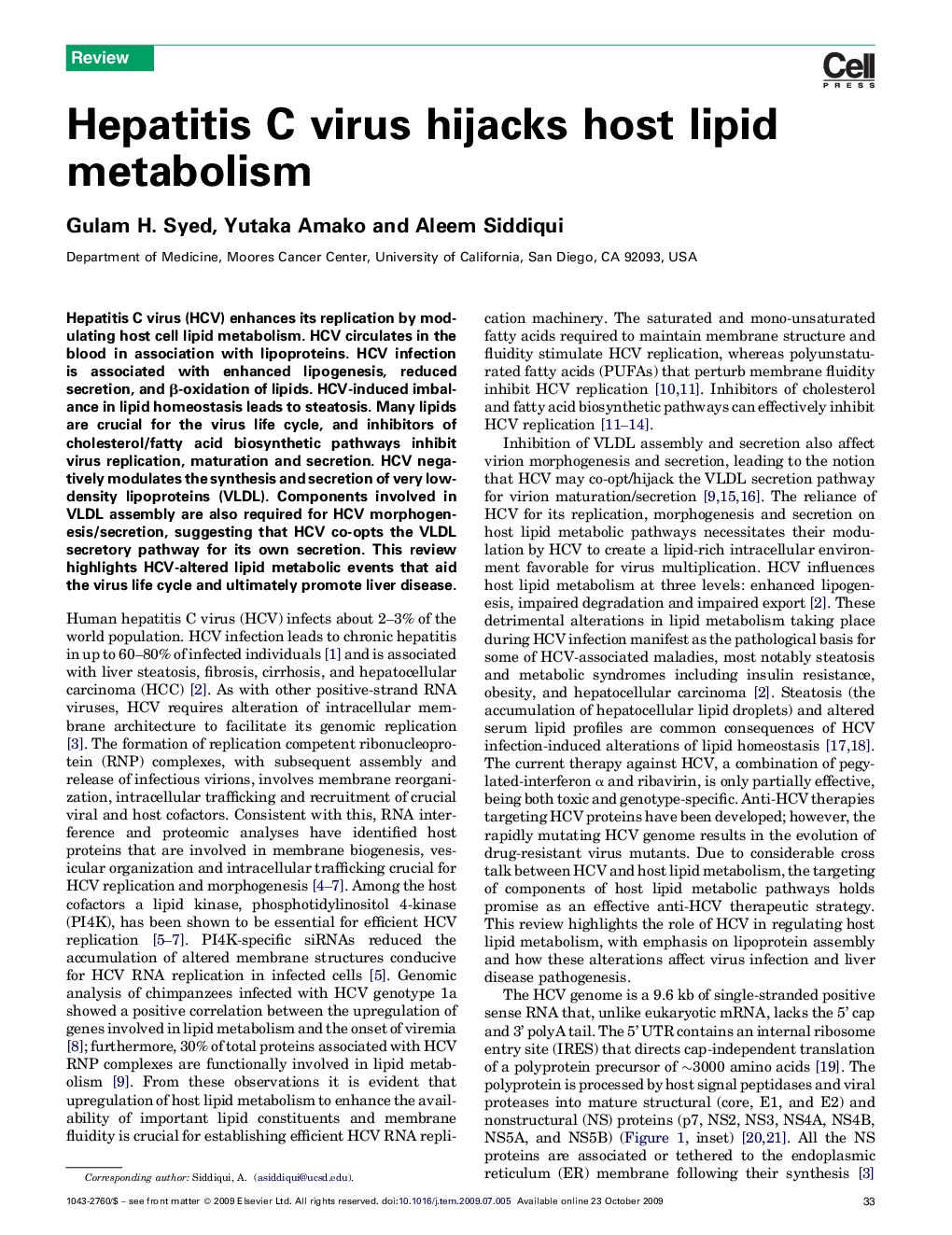| کد مقاله | کد نشریه | سال انتشار | مقاله انگلیسی | نسخه تمام متن |
|---|---|---|---|---|
| 2810732 | 1158475 | 2010 | 8 صفحه PDF | دانلود رایگان |

Hepatitis C virus (HCV) enhances its replication by modulating host cell lipid metabolism. HCV circulates in the blood in association with lipoproteins. HCV infection is associated with enhanced lipogenesis, reduced secretion, and β-oxidation of lipids. HCV-induced imbalance in lipid homeostasis leads to steatosis. Many lipids are crucial for the virus life cycle, and inhibitors of cholesterol/fatty acid biosynthetic pathways inhibit virus replication, maturation and secretion. HCV negatively modulates the synthesis and secretion of very low-density lipoproteins (VLDL). Components involved in VLDL assembly are also required for HCV morphogenesis/secretion, suggesting that HCV co-opts the VLDL secretory pathway for its own secretion. This review highlights HCV-altered lipid metabolic events that aid the virus life cycle and ultimately promote liver disease.
Journal: - Volume 21, Issue 1, January 2010, Pages 33–40